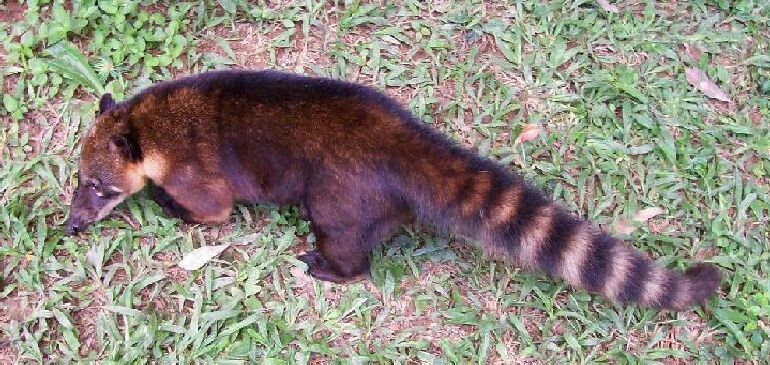South
American
Coatis are diurnal animals, and they live both on
the ground
and in trees. They
typically live in the forest. They are omnivorous and primarily eat
fruit, invertebrates, other
small animals and bird's eggs.
Coatis
search for fruit in trees high in the canopy, and use their snouts to
poke through crevices to find
animal prey on the ground. They also search for animal
prey by turning over rocks on
the ground or ripping open logs with their claws.
Females
generally live in large groups, called bands, consisting of 15 to 30
animals.
Males,
on
the
other hand, are usually solitary. Solitary
males were originally considered a separate species due to the
different social habits and
were called "coatimundis", a term still sometimes used today.
Neither
bands of females nor solitary males defend a unique
territory and
territories therefore overlap.
Group
members produce soft whining sounds, but alarm calls are different, consisting
of loud woofs and clicks. When
an alarm call is sounded, the coatis typically climb trees, and then
drop down to the ground and
disperse.
Coatis
typically
sleep
in the trees. Predators of the South American Coati
include:
foxes,
jaguars,
jaguarundis,
domestic dogs, and people.
Reproduction
All
females in a group come into heat simultaneously when fruit is in
season.
Females
mate
with
multiple males.
Gestation
period
is
77 days. Females give birth to 2-4 young at a time, which are
raised
in
a nest in the trees for 4-6 weeks. Females
leave the group during this time.
Females
tend
to
remain with the group they were born in but males generally disperse
from their mothers' group after 3 year
|



